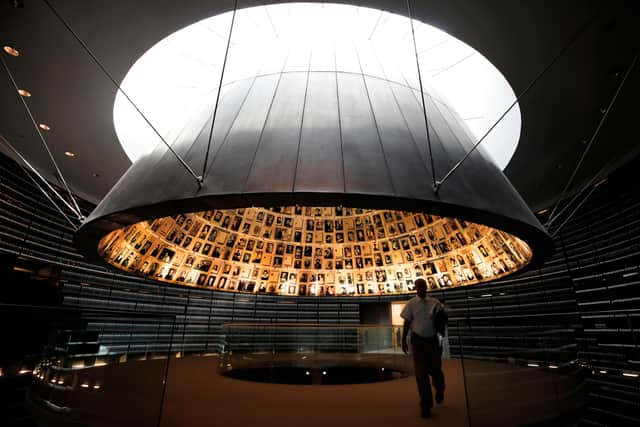Yom HaShoah 2023: when is Holocaust Remembrance Day and how is it observed in Israel and elsewhere?
and live on Freeview channel 276
Yom Hazikaron laShoah ve-laG’vurah, shortened to Yom HaShoah in Hebrew, is a day commemorating the six million Jews murdered in the Holocaust. In English, the day is called the Holocaust Remembrance Day, or Holocaust Day.
The first official commemorations took place back in 1951, adhering to a date in the Hebrew Calendar. But when is Yom HaShoah in 2023, and how is the day observed?Here’s what you need to know.
When is Yom HaShoah 2023?
Advertisement
Hide AdAdvertisement
Hide AdYom HaShoah is set according to the Hebrew Calendar taking place on 27 Nissan.
As the Hebrew calendar is based on the lunar cycle, the date of Yom HaShoah changes in the Gregorian calendar.
In 2023, Yom HaShoah takes place from sunset on 17 April, to the sunset of 18 April.
However, sometimes the date is moved to avoid any adjacency with Sabbath on a Saturday. If 27 Nissan occurs on a Friday, Yom HaShoah is moved back to the Thursday before - as in 2021. If Yom HaShoah falls on a Saturday - as in 2024 - the observance takes place on the Sunday after.
What are the origins of Yom HaShoah?
Advertisement
Hide AdAdvertisement
Hide AdIn Israel, the first Holocaust Remembrance Day occurred on 28 December 1949, after the Cheif Rabbinate of Israel announced an annual memorial should take place on 10 Tevet. Originally, the day was marked by the burial of ashes and bones of Jews brought back from the Flossenbürg concentration camp, and religious ceremonies were held in honour of the victims.
On 12 April 1951, the Knesset (the unicameral legislature of Israel) passed a resolution to establish 27 Nissan as the annual Holocaust and Ghetto Uprising Remembrance Day.
On 8 April 1959, the Knesset officially established the day when the resolution passed the Martyrs’ and Heroes’ Remembrance Day Law.


How is Yom HaShoah observed?
Yom HaShoah begins with a state ceremony at sundown, held in Warsaw Ghetto Square in Israel. During the ceremony, the national flag is lowered to half-mast and the president and prime minister deliver speeches.
Advertisement
Hide AdAdvertisement
Hide AdHolocaust survivors light six torches symbolising the approximately six million Jews murdered in the Holocaust and the Chief Rabbis recite prayers. Public entertainment is closed as per the law, and Israeli television airs Holocaust documentaries and talk shows.
At 10 am, an air raid siren sounds throughout the nation, and people observe two minutes of solemn reflection. Outside of Israel, Jewish communities observe this day in synagogues on the nearest Sunday as that is the more practical day for people to attend.
Commemorations typically include memorial services and communal vigils and educational programs. These programs include talks by Holocaust survivors, candle-lighting ceremonies, and the recitation of memorial prayers.
Some communities read the names of Holocaust victims or show Holocaust-themed films. In Poland, since 1988, a memorial service called The March of the Living takes place, where people walk the three kilometres between Auschwitz to Birkenau.
Comment Guidelines
National World encourages reader discussion on our stories. User feedback, insights and back-and-forth exchanges add a rich layer of context to reporting. Please review our Community Guidelines before commenting.
